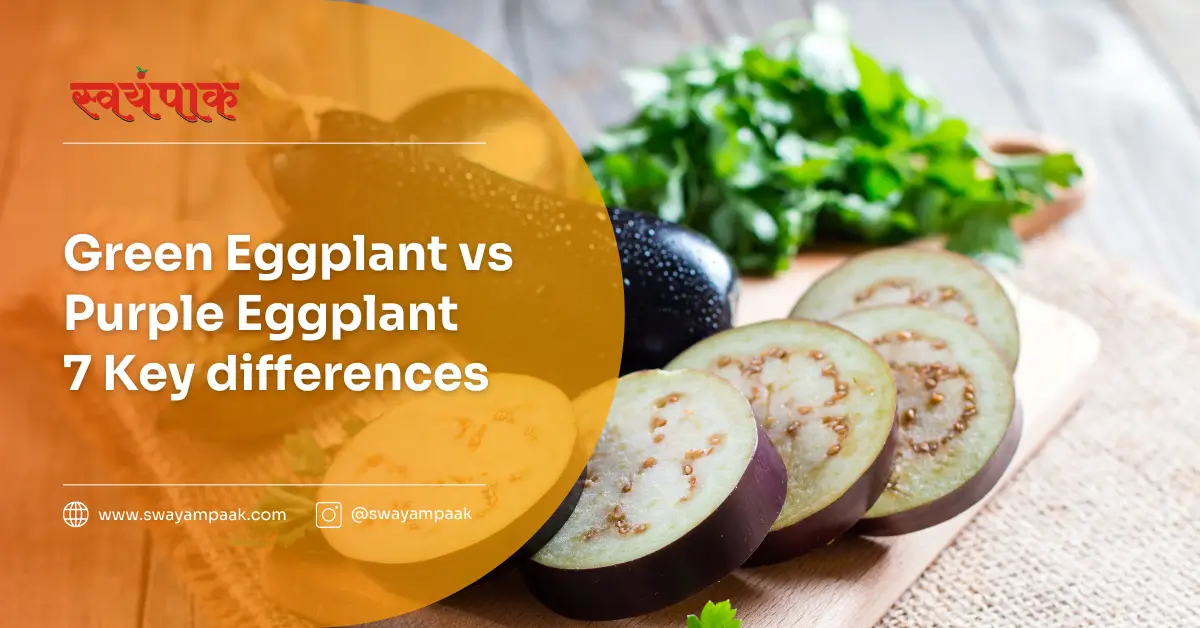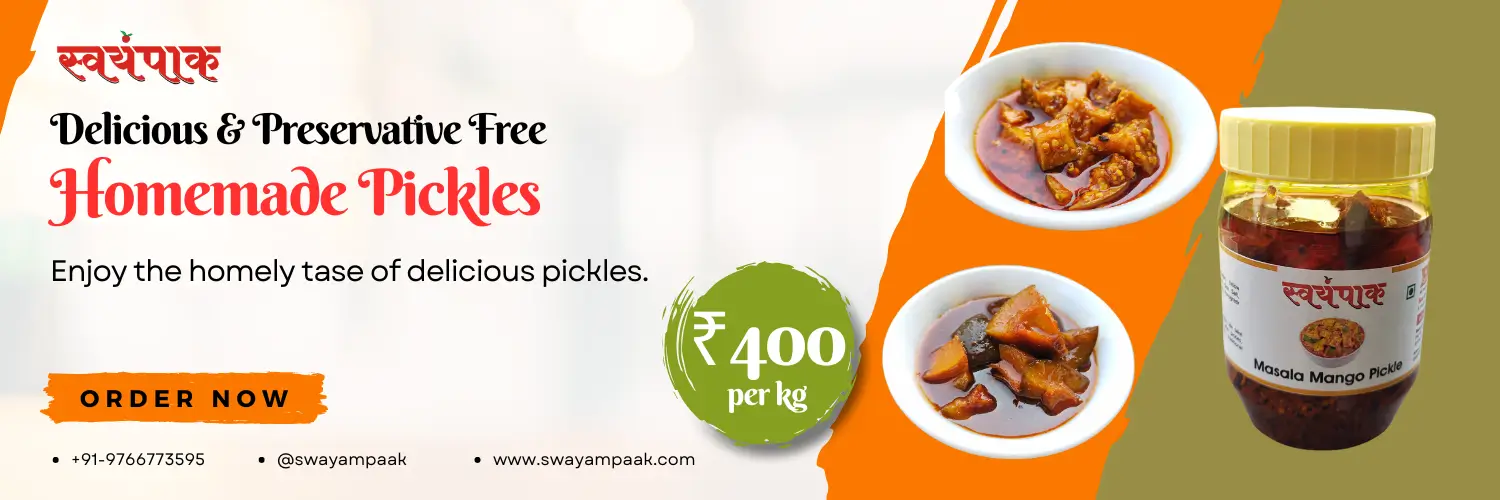Eggplant, a versatile vegetable, comes in a variety of colours and shapes. While purple eggplant is the most common, green eggplant offers a unique twist.
In this blog Green Eggplant vs Purple Eggplant, we will delve into the differences between these two varieties, exploring their taste, texture, nutritional value, and best culinary applications. Let’s uncover the secrets of these colourful vegetables and determine which one is the perfect fit for your next meal.
Key Takeaways: Green Eggplant vs Purple Eggplants
- Colour Variations: Eggplants come in both green and purple varieties, each with unique characteristics.
- Taste Differences: Purple eggplant is typically mild, while green eggplant can be slightly sweeter.
- Texture Contrast: Purple eggplant tends to be softer, while green eggplant offers a firmer texture.
- Nutritional Value: Both are low in calories and rich in fibre, with purple eggplant containing more antioxidants.
- Culinary Versatility: Both can be used in various cuisines, but purple eggplant is more common in Western dishes, while green eggplant shines in Asian cuisine.
- Cooking Methods: Roasting, grilling, and sautéing are popular cooking techniques for both types.
- Experimentation is Key: Try different eggplant varieties and cooking methods to discover your preferred taste and texture.
Green Eggplant vs Purple Eggplant
Green Eggplant
Green eggplant, a less common variety compared to its purple counterpart, offers a unique culinary experience. Often characterized by a milder flavour and a slightly sweeter taste, green eggplant is a versatile ingredient. Its tender texture and subtle taste make it a delightful addition to various dishes. While it might not have the same dramatic appearance as purple eggplant, its culinary potential is equally impressive.
Purple Eggplant
The most common type of eggplant, the purple variety, is recognized by its dark, glossy skin. Typically oval or elongated in shape, it has a spongy, absorbent flesh that can soak up flavours beautifully. Its mild taste makes it a versatile ingredient in various cuisines, from Italian ratatouille to Indian baingan bharta. The purple colour is derived from anthocyanin, an antioxidant linked to potential health benefits.
Eggplants, or aubergines, come in a variety of shapes, sizes, and colours. While purple eggplant is the most common, green eggplants are also gaining popularity. This blog will delve into the differences between these two varieties, exploring their taste, texture, nutritional value, and culinary applications.
Understanding the Differences
To understand the differences between green eggplant and purple eggplant, let’s compare them across several key aspects:
- Appearance:
- Green eggplant: Usually smaller, with a light to dark green colour. They can be round, oval, or elongated.
- Purple eggplant: Typically larger, with a deep purple to almost black colour. They’re often pear-shaped or elongated.
- Flavour:
- Green eggplant: Generally milder and slightly sweeter than purple varieties.
- Purple eggplant: Can have a slightly bitter taste, especially larger ones.
- Texture:
- Green eggplant: Often more tender and less seedy.
- Purple eggplant: Can be meatier and may have more seeds, especially larger ones.
- Culinary uses:
- Green eggplant: Well-suited for stir-fries, curries, and dishes where a milder eggplant flavour is desired.
- Purple eggplant: Versatile, used in many cuisines for dishes like ratatouille, eggplant parmesan, and baba ganoush.
- Nutritional content:
- Both varieties are low in calories and rich in fibre.
- Green eggplants may have slightly higher amounts of certain antioxidants.
- Availability:
- Green eggplant: Less common in Western markets, more prevalent in Asian cuisines.
- Purple eggplant: More widely available in most grocery stores.
- Growing conditions:
Both types prefer similar growing conditions, but some green varieties may be better suited to certain climates.
Nutritional Difference: Green Eggplant vs Purple Eggplant
| Nutrient (per 100g) | Green Eggplant | Purple Eggplant |
|---|---|---|
| Calories | 25 | 25 |
| Carbohydrates | 6g | 6g |
| Fiber | 3g | 3g |
| Protein | 1g | 1g |
| Fat | 0.2g | 0.2g |
| Vitamin C | 2.2mg | 2.2mg |
| Vitamin K | 3.5μg | 3.5μg |
| Potassium | 229mg | 229mg |
| Manganese | 0.2mg | 0.2mg |
| Folate | 22μg | 22μg |
Culinary Applications of Green Eggplant vs Purple Eggplant
Green and purple eggplants both play significant roles in Indian cuisine, but they are often used differently due to their unique characteristics. Here’s a comparison of their culinary applications in Indian cooking:
Green Eggplant:
- Bharva Baingan: Often stuffed with spices and pan-fried or baked.
- Dahi Baingan: Used in yoghurt-based curries, where its milder flavour complements the tangy yoghurt.
- Baingan Bharta (regional variations): Some regions prefer green eggplant for this mashed eggplant dish.
- Stir-fries: Commonly used in quick, dry vegetable dishes.
- Pickles: Green eggplants are popular for making spicy pickles.
Purple Eggplant:
- Baingan Bharta: The most common variety used for this popular smoky, mashed eggplant dish.
- Bagara Baingan: A Hyderabadi dish where baby purple eggplants are cooked in a peanut-sesame sauce.
- Begun Bhaja: Bengali-style fried eggplant slices.
- Curries: Often used in various regional curries due to their meatier texture.
- Vangi Bath: A South Indian eggplant rice dish.
Key differences in application:
Stuffing: Smaller, round green eggplants are often favoured for stuffed eggplant dishes due to their size and shape.
Texture: Green eggplants, being more tender, are often preferred for quick-cooking methods. Purple eggplants, with their meatier texture, stand up well to longer cooking times and grilling.
Flavour absorption: Purple eggplants, especially larger ones, are great for absorbing complex spice blends in curries.
Presentation: The vibrant purple colour of traditional eggplants is often utilized for visual appeal in dishes.
Regional preferences: Some regions in India prefer green eggplants for certain dishes, while others stick to purple varieties.
Experimenting with Cooking Methods
To maximize the flavour and texture of your eggplant, consider these versatile cooking techniques:
- Roasting: This method brings out the natural sweetness of eggplant and imparts a smoky flavour. Roasting whole eggplants or eggplant cubes can create a delicious base for various dishes.
- Grilling: For a charred and smoky taste, grilling is an excellent choice. It works particularly well with larger eggplant varieties. Slicing the eggplant into thick planks before grilling ensures even cooking.
- Baking: A healthier alternative to frying, baking eggplant preserves its nutrients while developing a tender texture. You can bake whole eggplants or eggplant slices, depending on your recipe.
- Sautéing: A quick and easy method, sautéing eggplant in a little olive oil or other preferred oil can be a flavorful option. It’s perfect for stir-fries and other quick meals.
- Stuffing: For a hearty and satisfying dish, consider stuffing eggplant with a savoury filling. You can bake or grill the stuffed eggplant for a delicious main course.
Which Eggplant to Choose?
Green Eggplant vs Purple Eggplant
While both green and purple eggplants offer unique culinary possibilities, understanding their differences can help you make the best choice for your recipe.
- Purple eggplant is typically larger, with a mild flavour and soft texture. It’s versatile and shines in dishes like ratatouille and baba ghanoush.
- Green eggplant tends to be smaller and firmer, with a slightly sweeter taste. It’s excellent for grilling, roasting, or adding to Asian-inspired dishes.
Conclusion
Both green and purple eggplants offer distinct flavours, textures, and culinary possibilities. While purple eggplant is the more common variety, green eggplant deserves equal attention. By understanding their unique characteristics, you can make informed choices to enhance your dishes.
Remember, the best way to appreciate the nuances of these eggplants is to experiment with different recipes and cooking methods. Whether you prefer the mildness of purple eggplant or the slightly sweet taste of green eggplant, incorporating both into your cooking repertoire can elevate your culinary experiences.
So, next time you’re at the market, don’t hesitate to pick up both varieties and embark on a flavourful journey!


